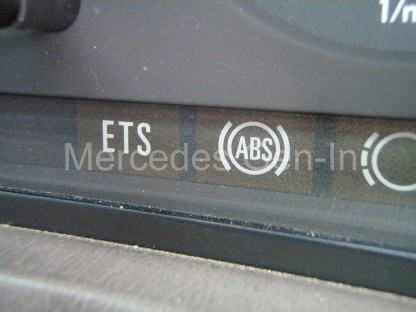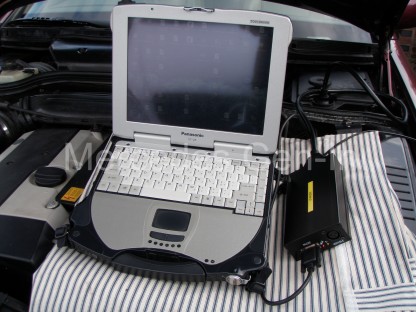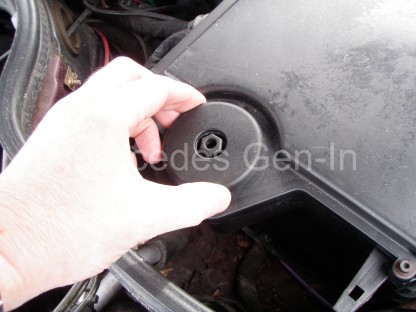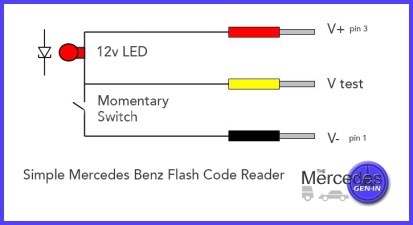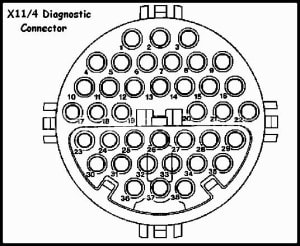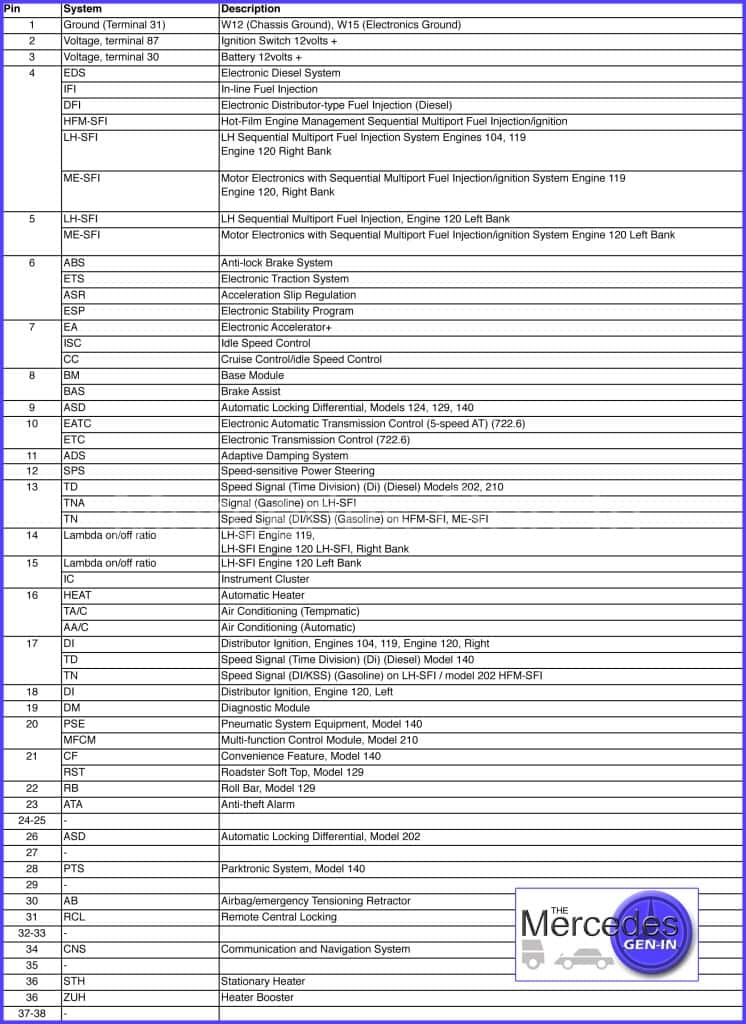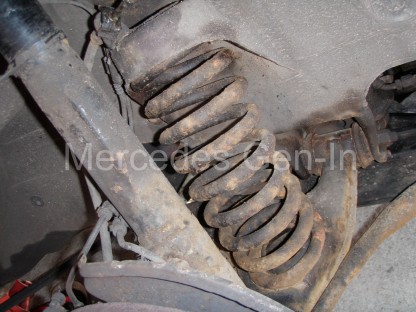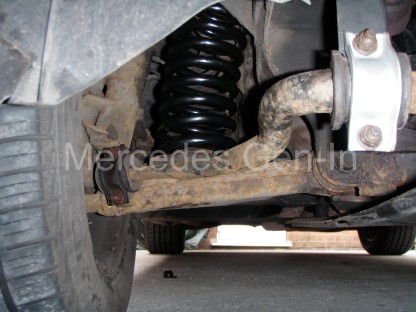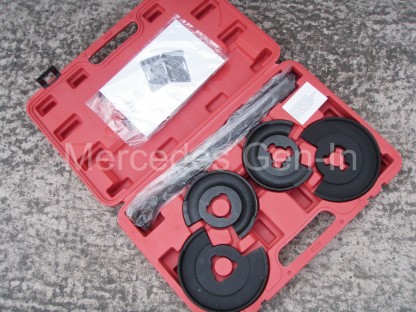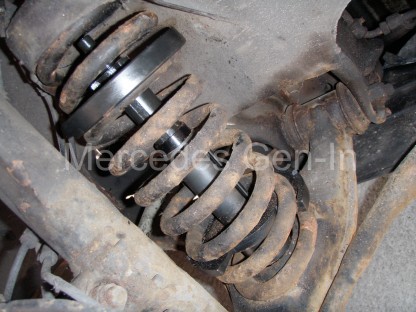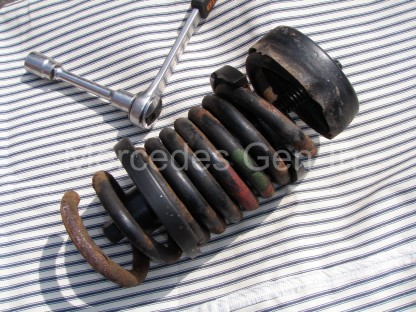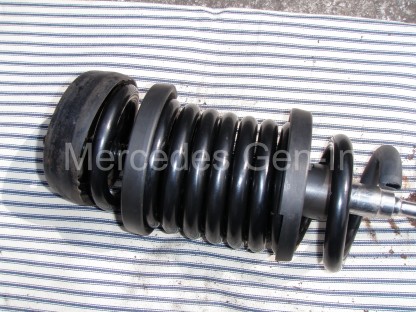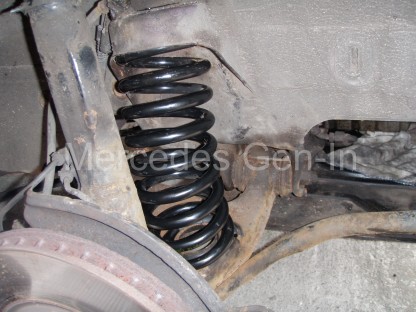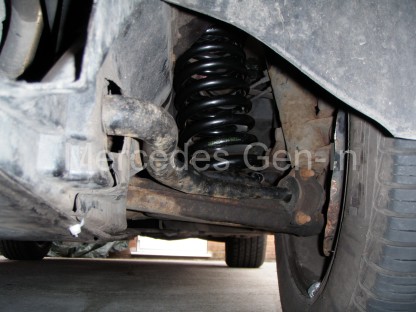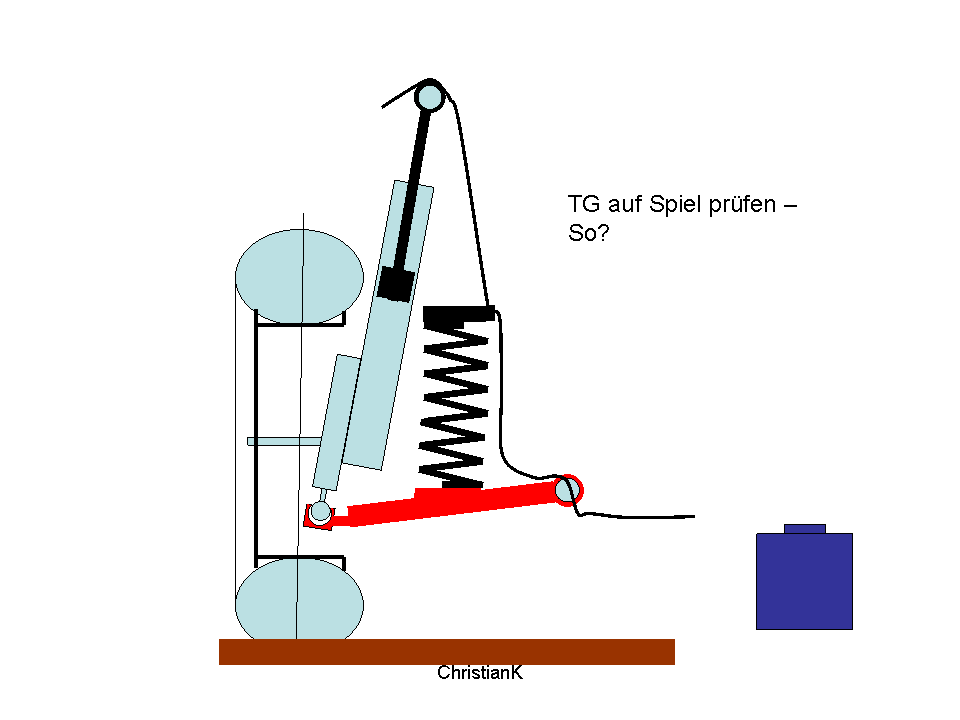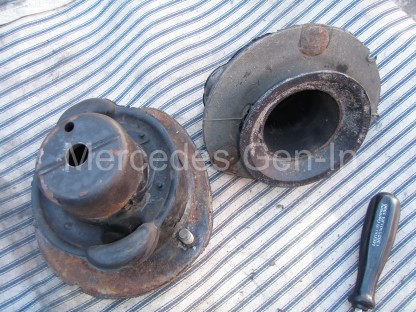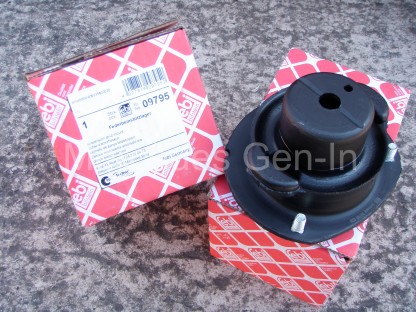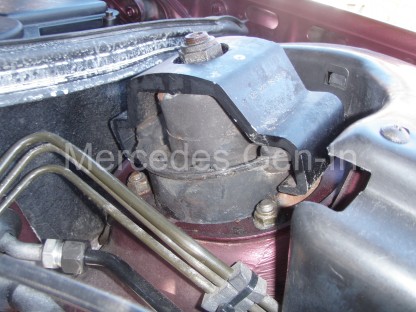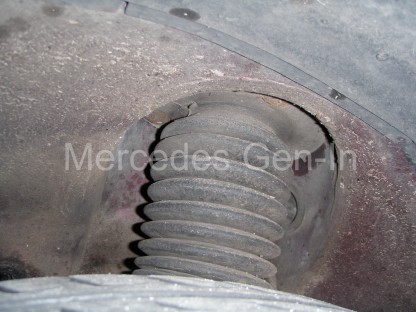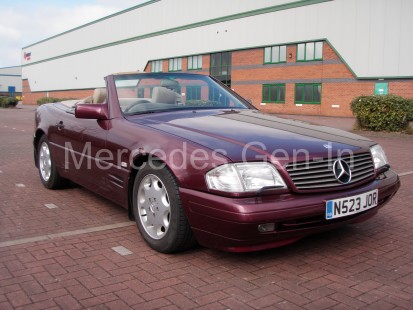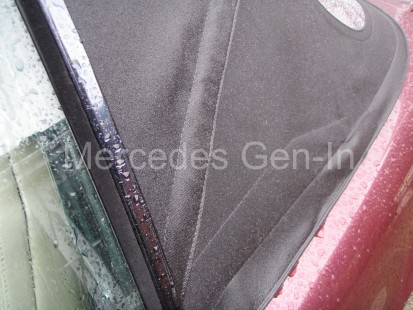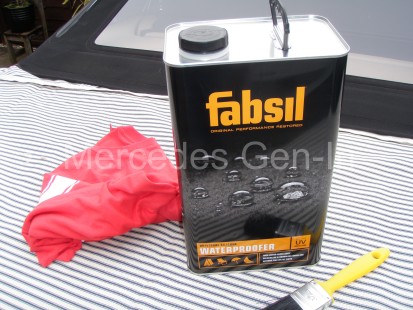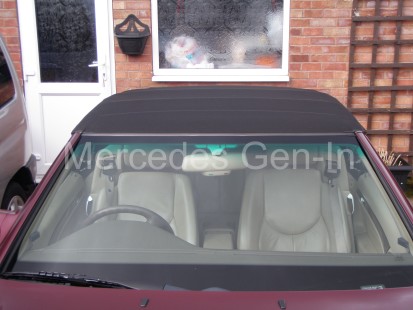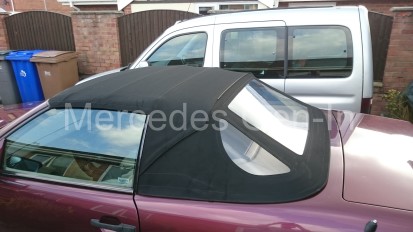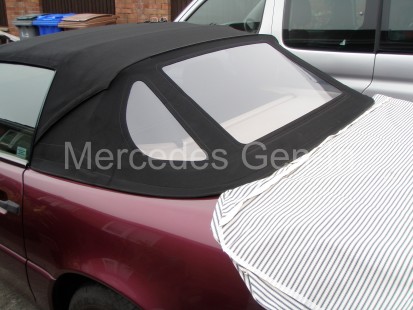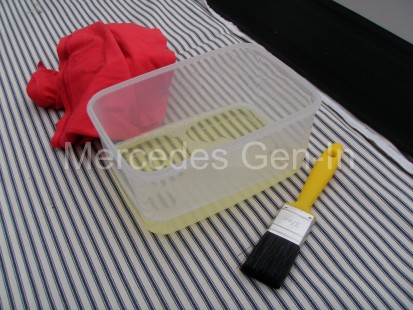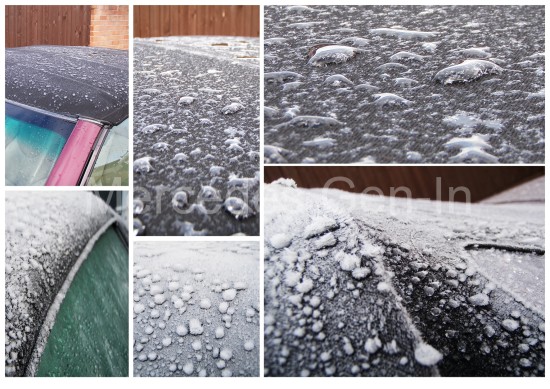I started up the Mercedes SL (R129) and reversed it out of the drive and as I straightened up to drive forward both the ETS and ABS amber lamps illuminated on the dashboard. This was shortly after completing the front road spring swap posted earlier on this site.
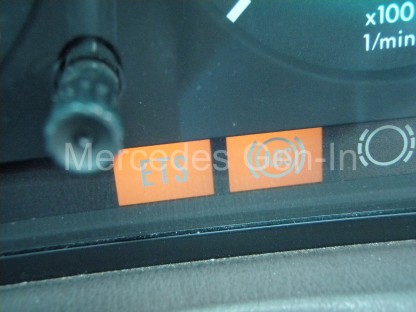
Apart from indicating more work to do, I began to wonder if I had disturbed anything when I had replaced the front springs or even earlier, the suspension top mounts. I went about my business on that day driving the car with the fault lights illuminated, they would pop straight on as soon as the key was turned and would not clear down on any number of engine re-starts. I had noticed disappointingly, that I had also lost 5th gear (5 speed version of the 1996 R125 with electronic control overdrive gear) and also cruise control operation. This underlined it was a speed signal fault but I would have to investigate further to narrow the field.
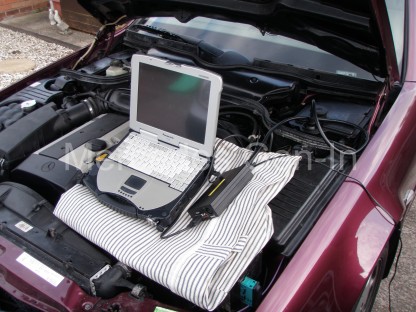
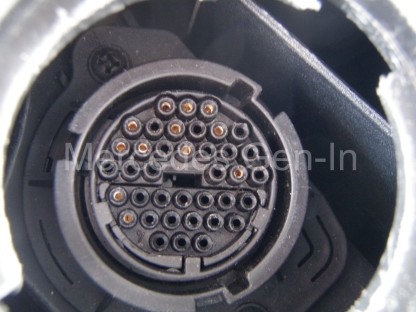
I connected the car to my Carsoft code reader kit. This vehicle being the 1996 model SL it had the Mercedes proprietary diagnostic communication system, accessed from the 38 pin diagnostic socket inside the ECU box next to the bulkhead (firewall). You can read more about early MB diagnostic systems in this post. The first read of the ABS system revealed a recorded fault code with the rear left wheel speed sensor (C1106). Rear wheel sensor plausibility.
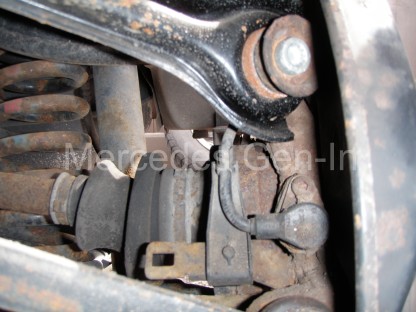
On removing the road wheel and checking the cable routing, all looked well. Often the older series of Bosch wheel speed sensors have a habit of collecting large amounts of iron debris on the sensing tip over time, causing impulse read issues at low speeds. This was in my mind as being the fault, though it was unusual that on this occasion it had not reset the warning lamps on restart and re-triggered them only when the car started moving.
I removed the sensor from its mounting hole on the rear hub carrier and inspected the tip. It was not too bad and looked in good order. I had previously measured the sensors static resistance of 1300 ohms (1.3k) and this is in the range I would expect across the two sensor wires. 1.2k to 1.8k is the norm, anything outside this and I would be suspecting the sensor or wiring itself. A quick check to chassis ground, from either of the two sensor wires just proved that there is no chafing of cables to the vehicle chassis. It all looked electrically good, so investigations continued.
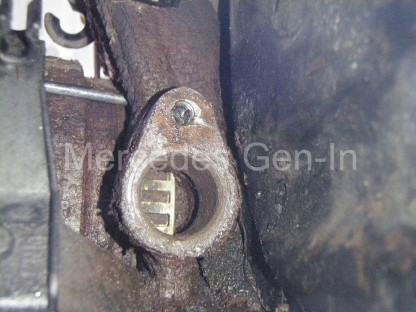
Just a point on removing the sensor from its pocket on the rear carrier – invariably it will be very tight or even bound into the hole, unlike the front sensors where they have a large clearance into the hole, the rears are a ‘push fit’ for about one inch and any corrosion causes them to bind woefully into the hub. The technique here is to remove the single hex cap head fixing from the sensor and spray penetrant all around the sensor. Push a screwdriver into the clearance hole of the sensor tab and begin to work it, levering very slightly to and fro, very carefully. Continue application of penetrant. Tap the tag gently from the direction of the drive shaft then insert a thin screwdriver through the tab hole into the casting tapped hole and lever the sensor back to its aligned position. keep doing this, rotating the sensor many times while spraying more WD40 or similar. Eventually the sensor should be able to worked out from its hole. If you have not done so already, unclip the cable from the three snap clip mounting points behind the backplate to facilitate easy removal.
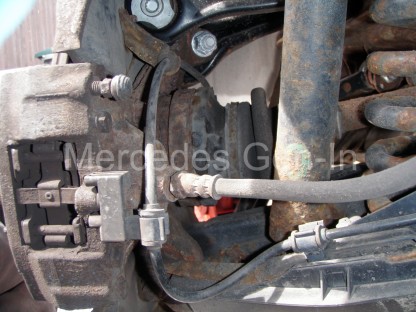
I shone a torch into the hole where the sensor is mounted to reveal the reluctor ring. This is a slotted (punched) continiuos steel band that is held around the drive shaft outer CV joint body as it passes through the hub bearing centre. Its purpose in conjunction with the sensor, is to provide measured impulses as the wheel rotates, each slot passing the sensor tip as it turns. This passing (gap, steel, gap, steel and so on) induces a small AC voltage in the sensor coil and this is passed in the form of electrical impulses, through its connecting cable to the ABS controller, allowing it to determine wheel speed.
I prodded around inside the sensor hole and discovered that the reluctor ring, sometimes called a ‘tone-wheel’ was damaged. It was split (like a letter ‘C’)and no longer gripped the circumference of the CV joint/driveshaft. Obviously it was just spinning and not providing the correct road speed signal in comparison to that measured at the controller from the other three wheels, flagging a fault code. My heart sank… Although tapping on a new tone wheel is quite simple, this is a large job to undertake, as to gain access it involves removing the hub and withdrawing the drive shaft from the bearing centre – this usually destroys the hub bearing in doing so and it then has to be replaced, more £££ and time I just do not have at the moment. Although driving the car without ABS was no major concern on my normal commute, what did matter was that 5th gear was disabled and fuel costs as they are, this would have made my toes curl with the additional cost over any length of time.
So what was I to do?
I had noticed that the tone ring was in very good condition and the surface where it once was attached was clean and oil free. I could just see its inner edge as it passed the rear of the hub, so I selected Neutral and rotated the hub so the broken edges could be seen – they were clean and nothing was missing – just a straight, clean fracture. Taking a selection of pick tools and jewellers screwdrivers from the toolbox I proved it was possible to wedge the tone ring onto the drive shaft by forcing the thin tools into the gap between the ring and hub casting around the accessible 1/3 that was visible of the ring. The gap in the split ring was forced closed, all but for less than half a millimetre gap.
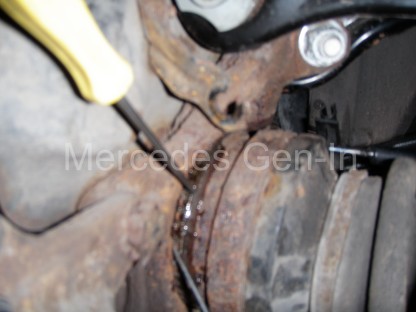
Mixing up some quality epoxy two part adhesive, using a small screwdriver I built up the edge of the tone wheel to the CV joint body, pushing epoxy into the punched holes of the tone ring, then cleaning off the excess. Allowing this to dry hard at the repaired split section, the hub was rotated and further epoxy was applied to the complete circumference of the ring, filling in the slots, pushing and forcing the glue into the ring as I went. Making sure I cleaned any excess that could interfere with the clearance between ring and sensor. Finishing the job, allowing it to fully harden before testing the clearance by inserting a screwdriver into the sensor hole then slowly rotating the hub confirming the lack of high spots – there wasn’t any so the sensor was refitted and the road wheel replaced.
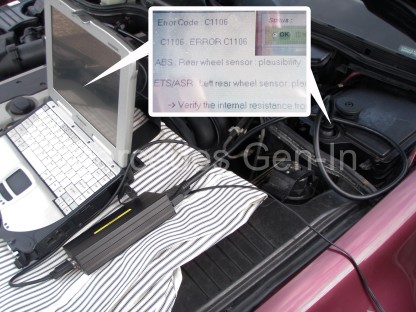
Later the Carsoft reader was connected and the ABS fault code cleared once more, a road test proved the repair to be sound and reliable. The 5th gear worked, cruise control functioned as it should and importantly the ABS was once more available should I ever need it. (Even better no warning lamps!)
I do realise that this repair is only a temporary fix to keep me going until I revisit the rear hub to replace the tone wheel/reluctor ring, but it worked perfectly and for me is a perfect short term solution. The repair to the ring is not stressed, it merely rotates in front of a sensor with an air gap between the two components – if it does fail again at some point before I get around to the proper fix, I will at least know exactly what the problem will be! Two weeks on – no problems to date, but I will say they are expected to return again at some point!
